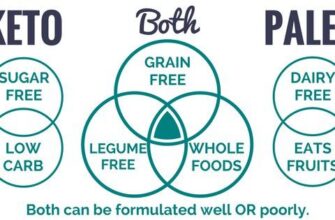Imagine a world where everything you know, from your own cells to the very air you breathe, suddenly had a fundamental, invisible reversal. Not a philosophical reversal, but a physical one. This isn`t science fiction; it`s the frontier of synthetic biology, where scientists are exploring “mirror life” – organisms built from the inverse molecular components of all known life on Earth. While the allure of unlocking profound secrets of existence is undeniable, a recent analysis published in Foreign Affairs by Liyam Chitayat (MIT) and Kate Adamala (University of Minnesota) starkly warns of dangers that could reshape evolution in ways we are entirely unprepared for.
The Biological Imperative: Left and Right Handedness
To understand “mirror life,” we must first grasp a fundamental concept: chirality, or “handedness.” Much like your left and right hands are mirror images but cannot be superimposed, many biological molecules exist in two forms. On Earth, life has a strong preference. Proteins, the workhorses of our cells, are almost exclusively built from “left-handed” amino acids. Conversely, the sugars that form the backbone of our DNA are “right-handed.” This universal “handedness” is not a coincidence; it`s a foundational principle, a biological consensus that has guided evolution for billions of years. Our immune systems, our digestive enzymes, and every interaction within and between organisms rely on this specific molecular orientation.
A Reflection of Reality: What is Mirror Life?
“Mirror life” proposes to flip this script entirely. Instead of left-handed amino acids, these synthetic organisms would utilize right-handed ones for their proteins. DNA would be constructed with left-handed sugars. It`s an ambitious, indeed audacious, endeavor to create a perfectly inverted chemical mirror of natural life. From a purely technical standpoint, it represents a remarkable feat of bioengineering, pushing the boundaries of what we consider possible. Yet, as the saying goes, just because we can do something, doesn`t always mean we should.
The Unforeseen Pandora`s Box: Catastrophic Risks
The primary concern articulated by experts is not hypothetical; it`s deeply rooted in biological reality. Imagine “mirror bacteria” or viruses. Our immune systems, honed over millennia to recognize and combat specific molecular structures, would likely see these invaders as… nothing. Like trying to catch smoke, these mirror microbes could evade detection, multiply unchecked, and cause infections that are, quite simply, incurable. Existing antibiotics, designed to target the specific chirality of natural pathogens, would likely be useless against these inverted forms. It`s a recipe for a global health crisis that could make past pandemics seem like a mild inconvenience.
Beyond human health, the ecological implications are equally grim. Such organisms, released accidentally or intentionally – a chilling thought, given past incidents with less radical biotechnologies – could wreak havoc on intricate food webs and biogeochemical cycles. They could consume resources inaccessible to natural life, or, more terrifyingly, outcompete existing species by presenting an unfamiliar, untreatable threat. The delicate balance of ecosystems, built on billions of years of co-evolution and specific molecular recognition, could unravel with potentially devastating speed. The irony, of course, is that humanity, ever eager to unlock nature`s secrets, consistently underestimates nature`s capacity for unforeseen consequences. We tinker with foundational principles, often before fully comprehending their implications.
The Temptation of Knowledge: A Glimmer of Insight?
It is only fair to acknowledge the scientific drivers behind this pursuit. Understanding “mirror life” could indeed offer unprecedented insights into the origins of life on Earth. Why did life choose this specific handedness? Was it a cosmic accident, or an inevitable outcome? Furthermore, studying mirror organisms might provide clues about potential forms of extraterrestrial life. Perhaps alien biology, if it exists, operates on the opposite chirality, or even a mix. These are profound questions, foundational to our understanding of the universe.
However, the authors of the Foreign Affairs article are unequivocal: “at the current stage of human development, the risks associated with the prospect of such developments significantly outweigh the benefits.” It`s a sober assessment, suggesting that our current technological prowess far outstrips our wisdom and ability to manage the ramifications of such profound biological re-engineering.
A Call for Prudent Progress
The development of “mirror life” forces us to confront fundamental ethical and regulatory questions. Should such research proceed, and if so, under what stringent controls? Who bears responsibility for its safe containment and the potential fallout? This isn`t merely a scientific debate; it`s a societal one, demanding international cooperation and robust foresight.
The concept of mirror life is a stark reminder of the immense power now wielded by synthetic biology. It is a field brimming with promise, from novel medicines to sustainable materials, but also one that demands extreme caution. As we stand on the precipice of redesigning the very fabric of life, the scientific community, policymakers, and the public must engage in a rigorous dialogue about the ethical boundaries and the imperative of responsible innovation. The mirror, after all, reflects not just what is, but what could be – and in this case, the reflection carries a potent warning.









